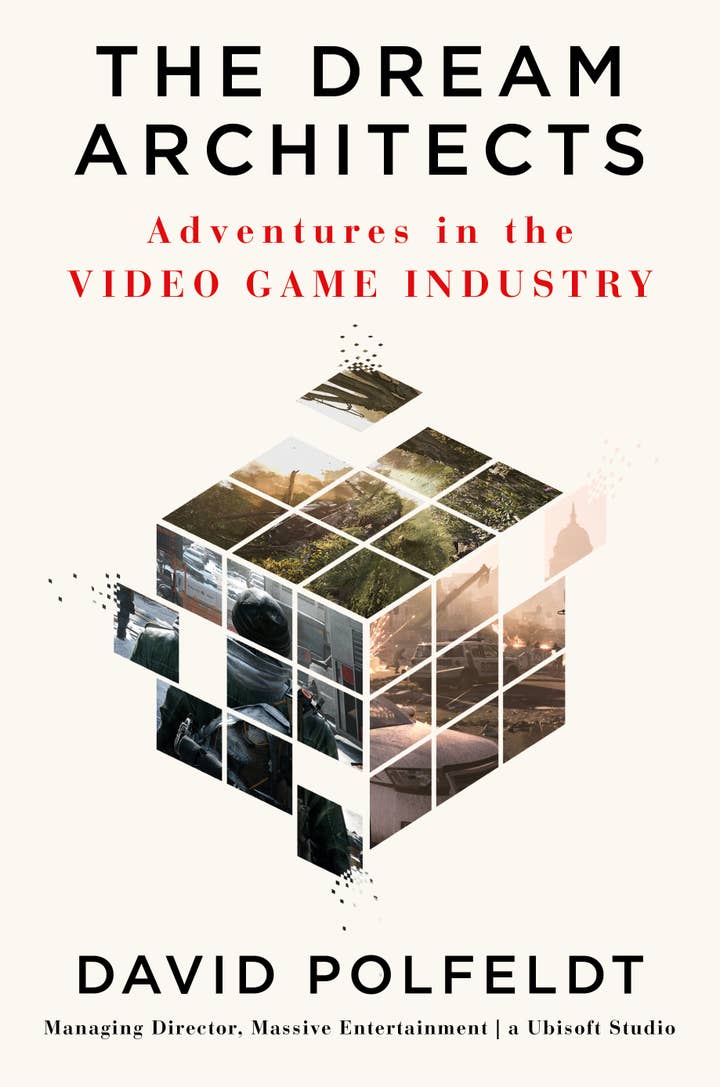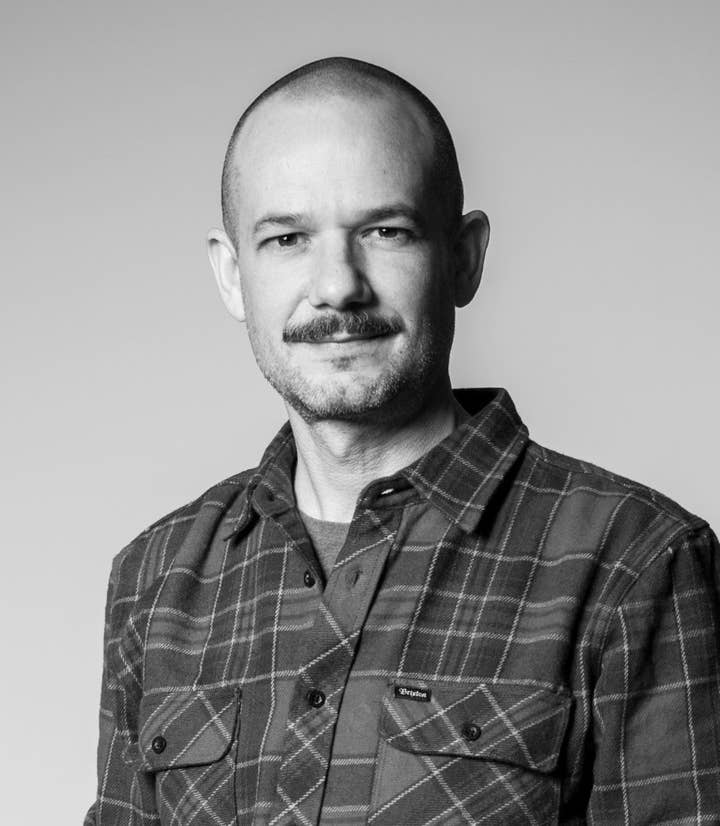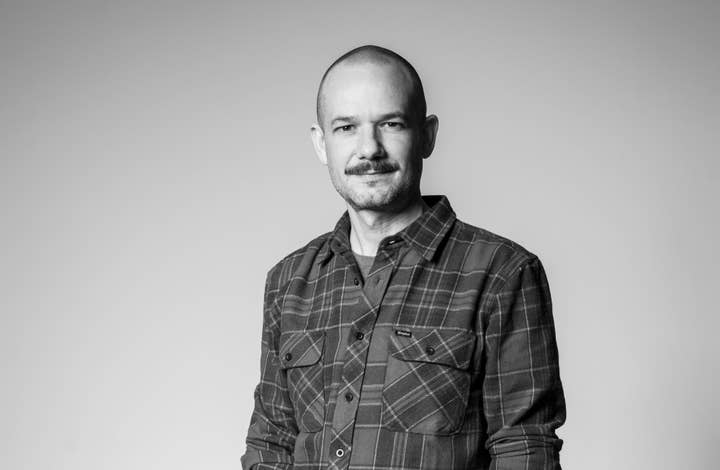Everything is made of stardust | The Dream Architects
In a chapter from his new memoir, Ubisoft Massive veteran David Polfeldt reflects on crunch, efficient game development, and bringing in a "closer" to wrap Far Cry 3
Excerpted from the book THE DREAM ARCHITECTS: ADVENTURES IN THE VIDEO GAME INDUSTRY by David Polfeldt. Copyright © 2020 by Li'l Factory AB. Reprinted with permission of Grand Central Publishing. All rights reserved.
In a divorce, there are no heroes. But in wrapping up a game, there actually are.
At the end of the development of Far Cry 3, we had been exposed to a Ubisoft concept that was entirely new to us at Massive. "A closer is coming," they said ominously, and we imagined professional hit men or shady lawyers showing up at our doorstep. In fact, these fantasies weren't completely inaccurate, because, apparently, Ubisoft considered it to be a well-known truth that a development team can't wrap up their own project. Someone always needed to come in with a hammer and nail the doors shut. The assumption was that we game developers were too attached to our project and wouldn't have enough perspective to make tough decisions. Of course, for a team who was used to autonomy and who was fiercely proud of itself, this was bordering on an insult. But we decided to play along until we knew more. In good old Swedish tradition, Petter [Sydow, producer] was furious but kept his clenched fists in his pockets.
"Shipping a game is MY JOB!" he said to me. "I don't need anyone to help me do my job!"
Delivering the final Gold Master to the publisher is the producer's finest moment, like the hero's chance to hand over the Holy Grail to King Arthur
He felt robbed of the ultimate climax, the culmination of many, many months of dedication and hard work. Delivering the final Gold Master to the publisher is the producer's finest moment, like the hero's chance to hand over the Holy Grail to King Arthur -- but now it seemed that this important and symbolic finale would be hijacked by a stranger. It was difficult and frustrating to accept.
A few weeks later, a tall Romanian guy entered Massive. His name was Cristian Pana, and he was the first closer we'd ever met. Initially, he delivered on our expectations of a trained assassin with a quiet and expressionless demeanor. It was as if he alone carried the eternal melancholy of the world on his broad shoulders. Behind the wire-rimmed glasses, his eyes were tired but revealed a very active intellect. No doubt he was clever. Too clever, in fact. We'd have to abandon Plan A. We quickly decided that there was no way we were ever going to be able to bullshit or sideline this guy. We'd have to accept him on the team. Enter plan B: Make him one of us.
At Cristian's request, I joined him outside in the parking lot next to the back entrance to Massive soon after he'd arrived. He was a smoker, the kind who smokes with no guilt, as if to signal I am killing myself and I like it. He was huge and confident. In a parallel universe, he might have had the nickname Chewbacca, but he was way too intimidating for cuddly talk.
"Listen," he said through a puff of cigarette smoke. "You have a great game. It will be very good. But I will have to do damage here before you can ship it, okay?"

"Why?" I had to ask. I was never a fan of the idea that suffering is necessary.
"Because...," he said, and paused before continuing, "Because it's always like that. Before I go, you will all hate me."
Man, this guy has been a closer for a really long time, I thought. His words genuinely piqued my interest, though, and a plan for an alliance began to form in my head. What if we managed to wrap up Far Cry together and become friends in the process? What if we didn't do any damage to the team at all, and what if we didn't end up hating him in the end? As a matter of principle, I refused to accept the finality of his expectations. And besides, in inner defiance toward my own predictability, I'd begun to really like the guy, and I thought that he was beginning to like Massive too.
After his smoke, we left the parking lot with a sense of unspoken brotherhood. You close the game, and in the meantime, I will think of your future, after the trenches, I thought. Cristian was like a loyal soldier who needed to come home.
At the end, all games need closing. At some point everything simply needs to be wrapped up and packaged into an experience for gamers everywhere. This is the cold, hard, and sometimes brutal phase of making games.
If the journey ends in a death march of crunch and relentless rationality, the big adventure starts at the opposite end of the spectrum: in the hazy and vague, in the fragile and esoteric, as far from the land of closers as possible.
Making AAA games is a true marathon, and as almost everyone who has tried to run a real marathon knows, it's all about pacing. Run too fast in the beginning, and at around 30km, your legs will stiffen, your stomach will cramp, your back will protest, your knees will collapse, and you will run into a mental wall that you can't overcome. You just cannot finish the race, because your aching body protests too aggressively. On the other hand, if you run too slow, you will feel good for a while, but then you realize you are committing yourself to a very, very long race, which might break you before the finishing line due to the endurance and patience it will require. Even the best Kenyan marathoners are extremely particular about their pace (though theirs is twice as fast as the average Joe's). In a four-hour marathon, seconds actually matter, counterintuitively.
In Sweden and the rest of Scandinavia... we prefer to work eight-hour days, like efficient Swiss clocks: highly dedicated and with a laser-sharp focus
Most game studios in the world run too fast. Much too fast. They see early success and feel fantastic at around 20km, but then they inevitably crash and burn. The gaming industry is jam-packed with stories of insane hours, infamous crunching, pressure, and abusive leaders who push their teams toward physical collapse. Such a studio might manage to release a game, sometimes even two, but when they bring out the champagne to celebrate, two thirds of the staff are burned out, have missed seeing their children grow up, have lost all faith in their leaders, and hate the studio, which quickly spirals into decline.
In Sweden and the rest of Scandinavia, the concept of a work-life balance has been understood and respected for ages. We prefer to work eight-hour days, like efficient Swiss clocks: highly dedicated and with a laser-sharp focus. It doesn't matter if it's in the game industry or not, it's the same everywhere. And as it so happens, this is the perfect pace not only for successfully creating a single game, but for actually giving birth to great studios that last a long time and can steadily build on the experiences gained and create better and better games.
After passing out on an airplane once many years ago when I had worked much too hard, I decided I had to slow down and hit the right pace. The dramatic scene in the skies was embarrassing, but what made a bigger impression on me were the words from the doctor onboard who stared into my eyes when I woke up in the chaos I had created: "You are going to work yourself to death if you keep up this tempo."
I don't know how she knew this from just looking at me, but I guess she was a good doctor. I got the message. I was too young to die. As a consequence, I decided that I had to program myself to leave the office at 5pm every day, no matter if the entire studio was on fire.

In the beginning of my new regimen, my young colleagues in the game industry found it very provocative that I was so strict about my pace, and it was seen as anti-gamer culture and anti-ambitious. But I was playing the long game, and the five o'clock rule resulted in a reliable day-in-day-out performance in the decade that followed. Balance is a good thing. I believe it has played an important role not just for me, but for all the Swedish game companies.
A large project like The Division or Avatar is traditionally led by a producer and a creative director, who in turn are surrounded by a team of rock-solid and specialized directors in areas such as audio, art, tech, and narrative. Maybe animation, realization, and cinematics directors too. It all depends on the focus and style of the project. The producer is supported by various associate producers, who oversee different domains. Some producers like to accumulate a tremendous amount of power and are very hands-on; others are great at building a team of loyal officers around them whom they rely on for execution. But at the end of the day, the producer is responsible for time, budget, and execution, while the creative director is responsible for content. Together, they share the quest for quality.
The small group of producers and directors is called the core team, and, in theory, all decisions on the project should trace back to them. I say "in theory" because rather than being an elegant decision-making process, making games is more like a never-ending, winding path of problem solving. The core team needs to rely heavily on the individual experts distributed across the team who are often highly specialized -- the best-of-the-best in extremely narrow fields of craft like digital hair, locomotion, matchmaking, optimization, anticheating, data management, dialogue, ambient audio, collision, or pathfinding. A game development team is like a community of exceptionally talented people who have all gone full-nerd into a topic that fascinates them to the extreme. Most of them believe that their respective field is the most important of all and will passionately fight for the right to deliver absolute perfection in it, no matter the reality or feasibility. It's like herding extremely emotional cats, disproportionally attached to an outrageously small detail that only they fully appreciate. But they're right in their attachment. The quality of the final game depends on this obsession.
The game grows into life from a black void, like a planet assembled from space dust. It's a beautiful thing to see
The director's job is to set goals, broad and narrow, deep and thin, short and long; and the producer's job is to break down the goals and delegate them to the smaller, specialized teams. At the peak of a AAA project, the team might be more than 500 people strong.
The level of trust is naturally high, but in order to verify that the production loop is working and that the directors' visions are on their way to being realized (at some distant point in the future), the best method is to develop playable prototypes as soon as possible, which can answer questions such as: When you say "soft light," is this what you mean? When you say "intention-revealing movement from the AI," is this what you mean? The only way to know for sure is to build prototypes. They can be tested and evaluated. The results can be discussed, debated, and fought for, which results in plans for improvement. Meanwhile, the producers actively keep an eye on simply cutting features that are too problematic or will take too much time, which to the directors is like removing a guitarist from a band or a main character from a movie. Analyze, improve, adapt. The winding road is long.
Prototypes are not tested arbitrarily or subjectively; the important ones are tested in a laboratory. An audience is hooked up to various devices that will measure their reactions. Pulses are taken, eye movements are tracked, and levels of sweat are measured. Together with interviews and hard data from the games, the directors build an amazing understanding of how their visions are perceived by an audience. The ability to interpret and adapt to all this data, the measurable touchpoints of the gamer's experience, is key to arriving at what gamers colloquially refer to as the "fun factor."
Then, from what was once nebulous and amorphous, fixed points begin to appear like tent poles. Some things get carved into stone and never move again. They will be on the disc; they will be what the gamers experience on release day. Slowly, the various specialists deliver onto this literal backbone, which gradually gets richer and richer. The game grows into life from a black void, like a planet assembled from space dust. It's a beautiful thing to see. Maybe it's a process that does require a closer as midwife?
When Far Cry 3 was finally wrapped up and delivered, the team had learned to love Cristian the Closer, to respect his craftsmanship, and to appreciate him for the heavy burden he carried. We learned that being a closer was a tough job, one that required a lonely individual to endure a hailstorm of frustration from the team. To our surprise, Cristian had been hiding a creative sensibility behind his hardened surface. His decisions as a closer were respectful, tasteful, elegant, and bold. He was a piano tuner allowing himself to play the Steinway when no one was listening. He turned out to be a virtuoso.
"I'll be back," he said over the farewell beer before departing for another mission in another studio, somewhere.
"Yes, please do come back," I said. And in what was beginning to become a habit, I added, "I promise to make it the best decision of your career."
David Polfeldt photo credit: Oscar Näsström








